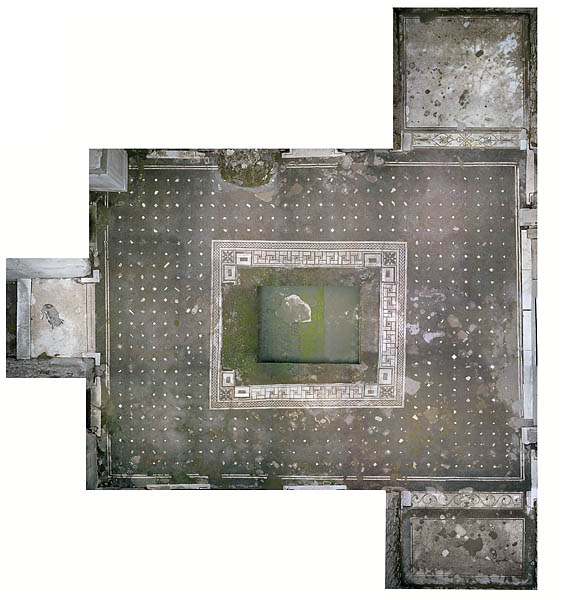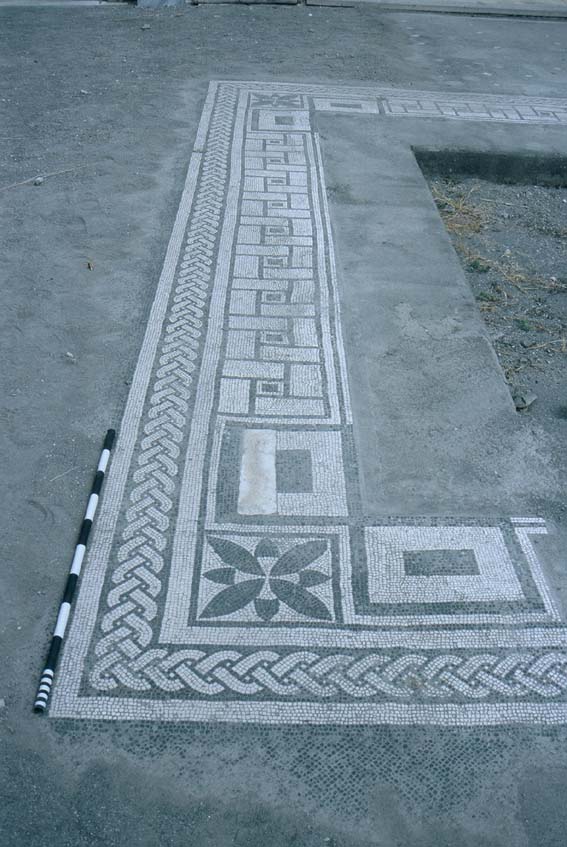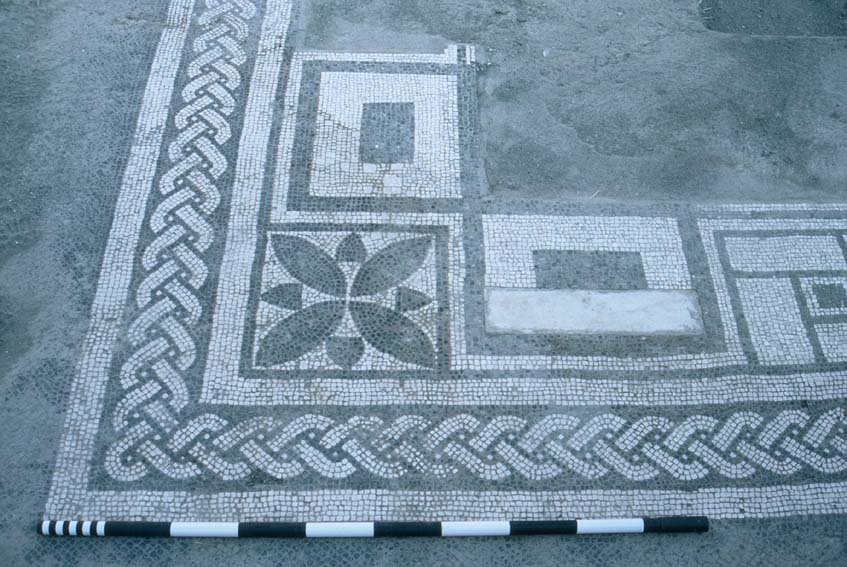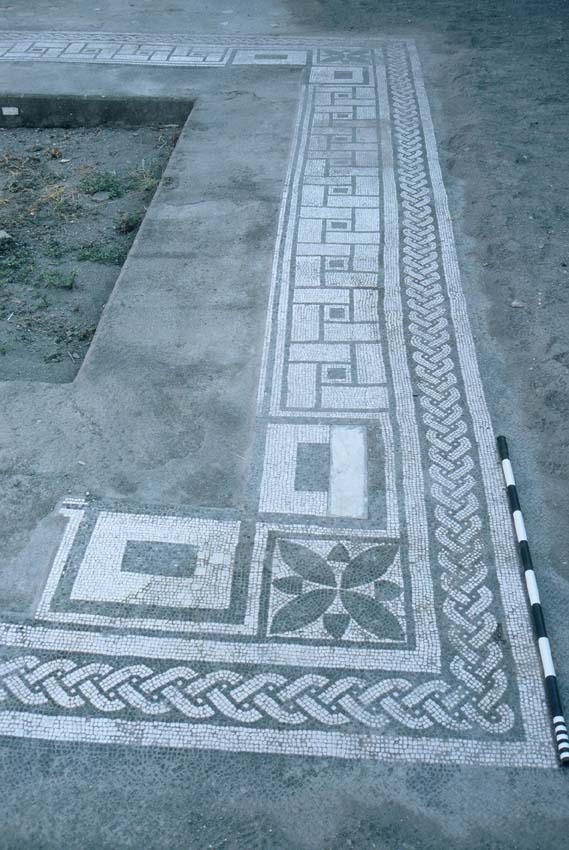Floor
Description
A. Karivieri & R. Forsell
The mosaic is fairly well preserved. There have been some restoration with modern concrete and in some parts the tesserae have become loose. There are also signs of ancient restoration. In the northwest corner the mosaic was partially destroyed when covered by the lararium. Tesserae in white, red, yellow and green occur in patches in the outermost part of the black mosaic floor and in front of door openings where the mosaic has been repaired. The geometric design around the impluvium is partly missing on the western side.
The main part of the mosaic floor is black with inlays of different kinds of marble cut in various forms. Some slabs are geometric: triangles, tetragons, hexagons and some irregular. The types of marbles represented are africano, alabaster, cipollino, giallo antico, pavonazzetto, rosso antico and serpentinite. A pair of white lines frame the floor along the walls.
Black and white geometric designs surround the impluvium. Closest to the impluvium, on each side is a set of squares (made of squares of four rectangles around a square), interrupted by a repeated corner design showing a rosette with eight petals, flanked by rectangles. The entire design is framed on all sides by a white band. Next follows a three-strand guilloche on black background framed by another band of white tesserae.
Next to the three rows of parallelly set black tesserae forming the edge of the otherwise white mosaic threshold of the fauces follows a ca 21cm wide band of diagonally set black tesserae. Forming the outer band of the atrium mosaic, it runs along the walls on all four sides. Next follows the pair of white bands, each consisting of four rows of horizontally set tesserae. These are framed on both sides and in between by black tesserae in three rows, equally set horizontally.
The main area of the floor consists of black tesserae set diagonally in slightly curving lines. The marble inlays are set in more or less straight rows. There are 33 rows running east-west and 25 rows north-south.
The mosaic design around the impluvium is generally made out of horizontally set tesserae, except for in the guilloche and in the petal-design. Three rows of horizontally set black tesserae mark the separation between the main mosaic floor and the mosaic around the impluvium. The first white band consists of six rows of white tesserae. The three strand guilloche is 16 cm wide and made out of white tesserae on a black background. The guilloche is again followed by six rows of white tesserae. On the eastern side of the impluvium, in a ca 0.90m wide area, the guilloche strands are wider and looser than elsewhere.
Two rows of black tesserae frame the large geometric border of the impluvium mosaic. The white squares are located in the corners nearest to the impluvium are framed by two rows of black tesserae. The rosette inside is made out of first four black pointed oval petals over a white circle partly covering another four black petals. The corner squares are separated from the adjacent design by tree rows of white tesserae. The rectangles, located between the corner squares and the chain of squares, has black frames and black rectangle in the centre. Rectangular marble slabs are located in the north-northwest and south-southwest rectangles. They have been suggested to mark the opening of a cistern below the floor. (Dexter) Along the flanks of the impluvium, the continuous bands of squares are framed by four rows of black tesserae. The white rectangles are all framed by two rows of black tesserae while the central black square is surrounded by two rows of white tesserae.
The motif is repeated nine times on the south and north side. On the east side, however, there was not enough space for seven whole squares. Instead there are six complete squares and one rectangle. What should have been the third square from the north instead consists of three rectangles and a black square is set in one of the rectangles. On the western side the pattern is destroyed. Instead the border ends towards the impluvium with two rows of black, three rows of white, two rows of black and finally two rows of white tesserae.
E-W 11.41m; N-S 9.20m (E part) 9.08m (W part).




